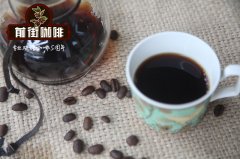What are the ingredients of milk? analysis of elements in milk

Professional coffee knowledge exchange more coffee bean information please follow the coffee workshop (Wechat official account cafe_style)
The composition of milk
If accompanied by a biscuit or a cup of espresso, the milk is absolutely delicious. But what makes milk so attractive? Think of it this way: milk is essentially a nutritional supplement to calves. It contains all the nutrients necessary for a calf to grow into a healthy and happy cow-water, sugar, protein, fat and minerals.
In terms of numbers, the main ingredient of milk is water, about 87%. The second most common compound in milk is sugar, accounting for about 4.8%. There is a special sugar in milk called lactose. Lactose is the reason why milk tastes sweet when it is fresh and sour when it is old (bacteria in milk gradually break down lactose into lactic acid with age).
Percentage content in milk
Average voter range
Water 85.5-89.5 87.5
Total solids 10.5-14.5 13.0
Fat 2.5-6.03.9
Protein 2.9-5.0 3.4
Lactose 3.6-5.5 4.8
Minerals 0.6-9.0 0.8
Although it sounds like whole milk has a much higher fat content than 2% or skim milk, it has an average fat content of only 3.9%. The fat in milk gives it a creamy texture. In non-homogenized milk, fat floats around in globules of different sizes, usually forming a fat cap at the top of the milk jar. With homogeneous milk, the milk passes through a small nozzle; this breaks down the fat ball into uniform droplets and distributes evenly in the milk. Milk protein accounts for about 3.4% of the total total fat milk. The protein in milk is responsible for producing and stabilizing foam. We'll come back to the effect of protein and fat on milk foam in a moment.
The rest. 8% are mainly different minerals, such as calcium and magnesium. The effect of these minerals on the flavor and cooking quality of milk is quite limited.
END
Important Notice :
前街咖啡 FrontStreet Coffee has moved to new addredd:
FrontStreet Coffee Address: 315,Donghua East Road,GuangZhou
Tel:020 38364473
- Prev

What is flannel? What's the difference between flannel filter cloth and filter paper? Does the flannel filter cup work well?
Professional coffee knowledge exchange more coffee bean information please follow the coffee workshop (Wechat official account cafe_style) what is flannel? A brief description of Qianjie Coffee flannel filter cup. What is flannel? In terms of material, the word Flano,Flannel is a loanword, a soft, suede woolen fabric woven with carded woolen yarn. Features: excellent: flannel
- Next

Historical stories of Rose Summer Coffee Origin introduction to the Origin of Rose Summer Coffee
For more information about coffee beans, please follow the Coffee Workshop (Wechat official account cafe_style). This variety was originally collected from the coffee forests of Ethiopia in the 1930s. From there, it was sent to the Lyamungu Research Station in Tanzania and then taken to the Centre for Agronomic Tropical Survey (CATIE) in Central America in 1953, where it was registered as T2.
Related
- Beginners will see the "Coffee pull flower" guide!
- What is the difference between ice blog purified milk and ordinary milk coffee?
- Why is the Philippines the largest producer of crops in Liberia?
- For coffee extraction, should the fine powder be retained?
- How does extracted espresso fill pressed powder? How much strength does it take to press the powder?
- How to make jasmine cold extract coffee? Is the jasmine + latte good?
- Will this little toy really make the coffee taste better? How does Lily Drip affect coffee extraction?
- Will the action of slapping the filter cup also affect coffee extraction?
- What's the difference between powder-to-water ratio and powder-to-liquid ratio?
- What is the Ethiopian local species? What does it have to do with Heirloom native species?

